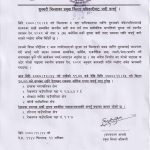Barley: Nutritional Importance And Health Benefits

Barley is one of the major cereal grains grown in temperate climates globally which belongs to the family Poaceae (i.e. also known as grass family). Besides it, it is the fourth-largest grain crop generally after rice, wheat and corn. About 150 varieties of barley are cultivated in the United States, Common barley Hordeum vulgare is most widely grown for food. Barley comes in two types, one is hulled barley (stay more distinct and chewer) and pearled barley gets soft.
Barley is a versatile grain used both for human nutrition and for animal feed. At least 60% of the barley crop is used for animal feed with the rest being used for human consumption. Barley is mostly used in the form of salads, soups or just served as a dish, often used in the production of alcoholic beverage for humans.
Barley was one of the earliest plants to be domesticated and continues to play an important role in modern agriculture today.
Nutritional Value
Barley grass has 11 times more calcium than cow’s milk, 5 times more iron than spinach and 7 times more vitamin C and bio-flavonoids than orange juice. Barley grass juice has anti-viral activities, which impair our body’s digestion and nutrient absorption and also neutralizes heavy metals such as mercury in the blood.
Barley has a good amount of several different nutrients that help keep our body humming. It is a good source of vitamins which helps our brain and immune system. Barley provides a big dose of manganese (an essential nutrient that helps to keep our body running) and phosphorus ( for healthy bones and teeth).
What are the nutritional values contained in barley?
• Calories: 193
• Fat: 0.7 gm
• Sodium: 4.7 mg
• Carbohydrate: 44.3 gm
• Fiber: 6 gm
• Sugar: 0.4 gm
• Protein: 3.6 gm
1) Carbohydrate :
A one-cup of pearled barley contains 193 calories, most of which are carbohydrates. So we´ll consume 44.3 grams of carbohydrates in a single serving, 6 grams of fiber, and 0.4 gram of naturally occurring sugar while the rest are starch. Whereas, one cup of hulled barley provides 651 calories, 135 grams of carbohydrate, 31.8 grams of fiber and 1.48 grams of naturally occurring sugar according to USDA data.
2) Fats:
Barley has less than one gram of fat (i.e. 0.7 grams) in a single one-cup serving of boiled, pearled barley.
3) Protein:
Barley contains about 3.6 grams of protein per cup cooked serving. It provides less protein than some other whole grains.
4) Vitamins and Minerals:
Barley is an excellent source of selenium, providing 13.5 micrograms or about 24.5% of the daily value (DV) set by the FDA that is used for food labels.
Barley is also a good source of manganese providing 0.4 milligrams or about 17% of the daily value. We can get a smaller amount of vitamin A, Vitamin B6, phosphorous, zinc and copper.
Impressive Health Benefits Of Barley
Some impressive health benefits ranging from improved digestion and weight loss to lower cholesterol levels and a healthier heart.
Here are evidence-based health benefits of barley,
1) Rich in beneficial nutrients:
Barley is rich in vitamins, minerals and other beneficial plant compounds. Soaking or sprouting may improve the absorption of these nutrients.
2) Barley may help to lose weight:
As it contains soluble fiber, which reduces hunger and enhances the feeling of fullness and may even promote weight loss.
3) The type of insoluble fiber found in barley may prevent the formation of gallstone, helping our gall bladder function normally and reducing our risk of surgery.
4) Whole-grain barley may help to improve insulin production and reduce blood sugar levels.
5) The type of insoluble fibre found in barley reduces cholesterol levels by preventing its formation and increasing its excretion through the faeces.
6) Regularly adding barley to our diet may reduce the risk factor for heart disease.

 एउटा यस्तो विषालु भ्यागुता, जसको मुल्य नै पर्छ ३ लाख, जान्नुहाेस्
एउटा यस्तो विषालु भ्यागुता, जसको मुल्य नै पर्छ ३ लाख, जान्नुहाेस्  भोलि र पर्सि बालबालिकालाई भिटामिन ए खुवाइदै
भोलि र पर्सि बालबालिकालाई भिटामिन ए खुवाइदै  खगराज अधिकारी गण्डकीको मुख्यमन्त्री नियुक्त
खगराज अधिकारी गण्डकीको मुख्यमन्त्री नियुक्त  सुनसरीमा दुवै पक्षबीच सहमति, कर्फ्यु खुकुलो हुदै
सुनसरीमा दुवै पक्षबीच सहमति, कर्फ्यु खुकुलो हुदै  स्टेफेनको शतकमा आयरल्याण्ड वोल्भ्सले नेपाल ए लाई दियो २८५ रनको लक्ष्य
स्टेफेनको शतकमा आयरल्याण्ड वोल्भ्सले नेपाल ए लाई दियो २८५ रनको लक्ष्य 


